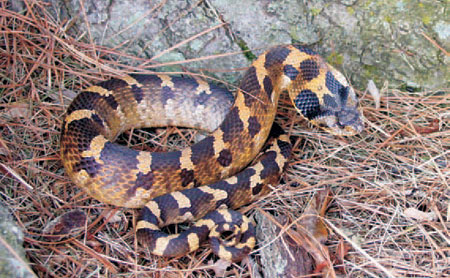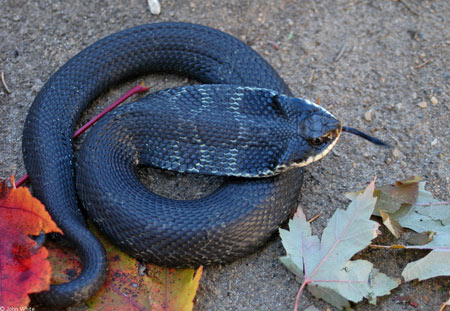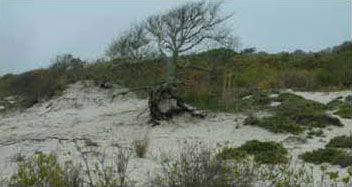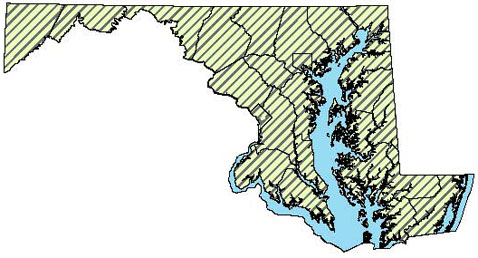Field Guide to Maryland's Snakes (Order Squamata)
Main_Content
Eastern Hog-nosed Snake (Heterodon platirhinos) | 
Photo of Eastern Hog-nosed Snake courtesy of Corey Wickliffe |
Size:
20 - 33 inches. Record - 45½ inches. |
Appearance:- The bizarre behavior of this snake when approached makes identification easy.
- They initially hiss and spread their neck like a cobra’s hood, then go through the throes of death, roll over and play dead, letting their tongue hang out.
- When turned upright they immediately roll back over.
- Their coloration is variable with yellow, brown, gray, orange or red on a dark splotch patterned back, however some individuals are an un-patterned ebony black or dark grey.
- The snout is upturned with a keel above, like a twin-bladed snow plow.
- The underside of the tail is lighter than the dark mottled belly.
- Scales keeled.

Photo of Eastern Hog-nosed Snake courtesy of John White
|
Habitats:Anywhere there are sandy soils, including fields, any open woods, agricultural fields and pastures. Appear to prefer edge habitats. |
How to Find:This diurnal species can be found anywhere there are large toad populations, their main prey item. Walk field, forest and wetland edges in late Spring and Summer, particularly during a toad metamorphosis event, or look in your backyard vegetable garden. Typically “plays dead” when handled. Only a few reported bites by this species. Considered non-venomous, though it is a “rear-fanged” snake with mildly toxic saliva. Often mistaken for Copperhead.

Photo of Habitat for Eastern Hog-nosed Snake
courtesy of Rebecca Chalmers
|
Distribution in Maryland:Can be found statewide but more abundant on the Coastal Plain.

|
|
